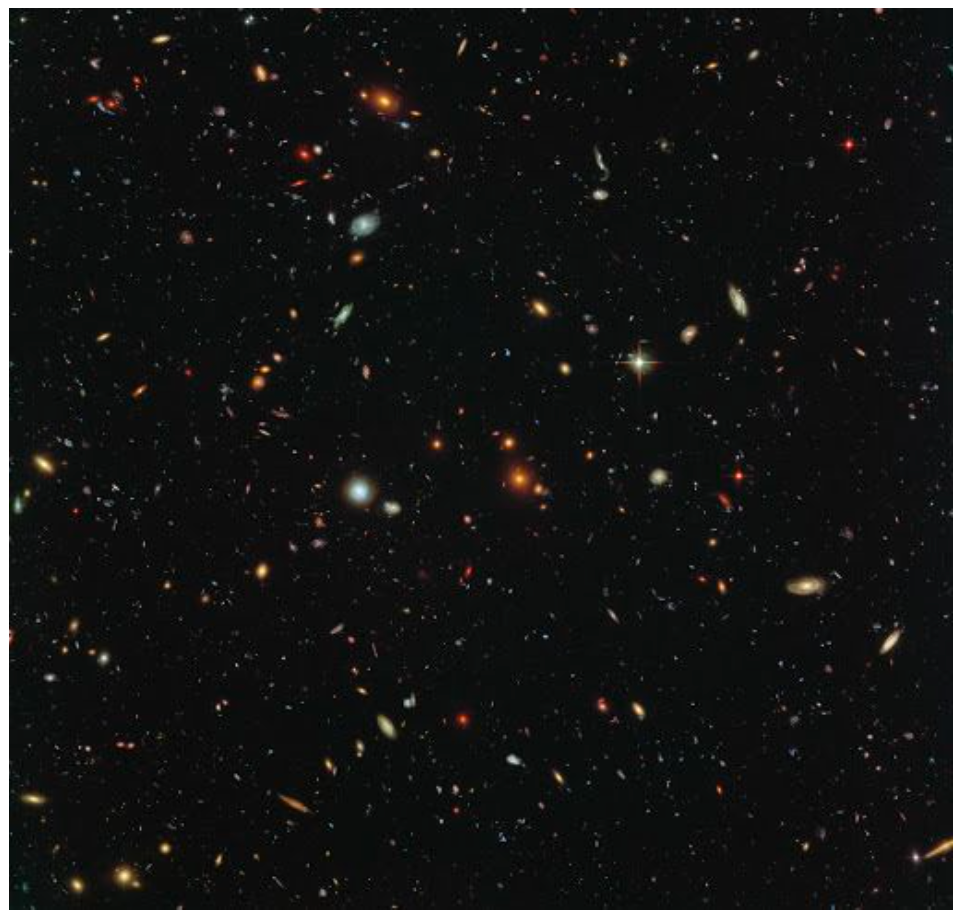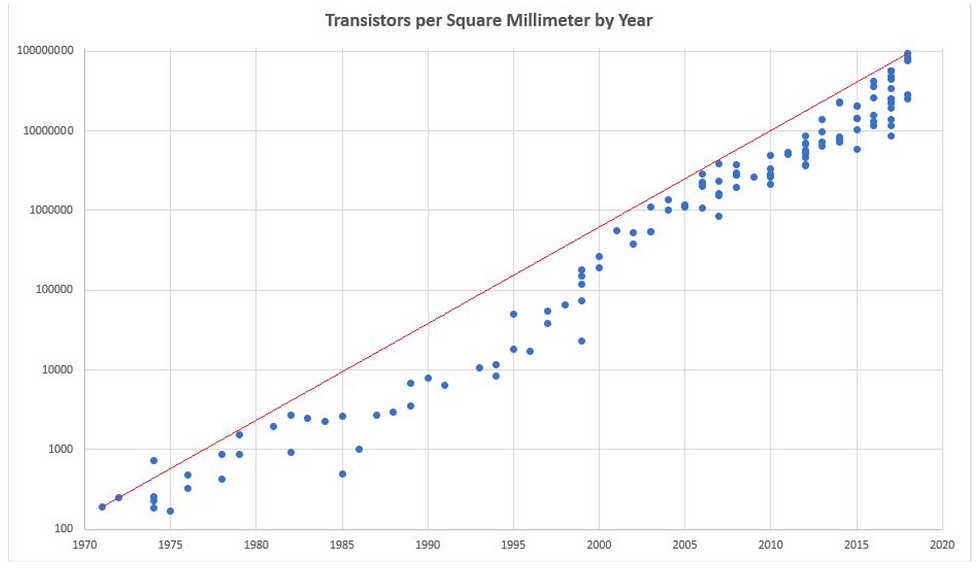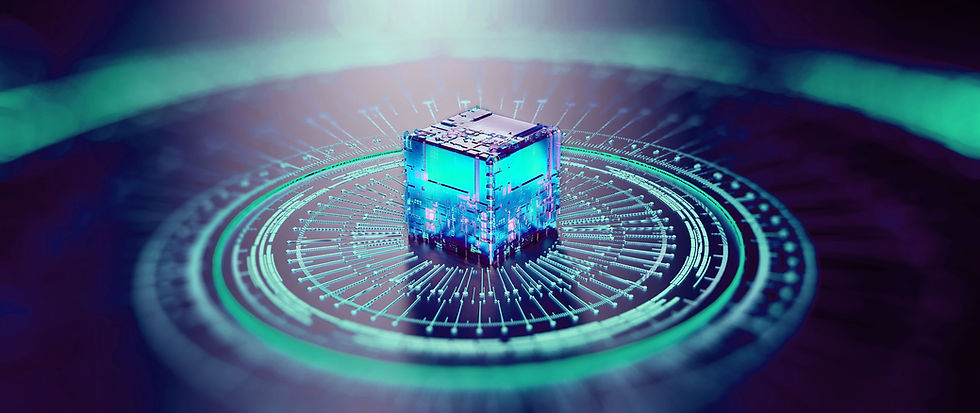The simulation hypothesis: you are living in a simulation.
- Gabriel Gramicelli

- Feb 2, 2021
- 6 min read
"The Simulation Argument is perhaps the first interesting argument for the existence of a Creator in 2000 years." - David Pearce "Thank you so much, Dr. Bostrom. You have proved that my psychiatrist was wrong all along." -Unknown
You are living in a simulation. The last phrase may either be interpreted as a statement or a hypothesis. As to this day, I am not aware of any individual whom has both interpreted it as a statement and isn’t an actor for the matrix movie series, I thus choose to interpret it through this article as a scientifically relevant and possible hypothesis, that once answered, may provide us with an unimaginable amount of confirmation, on the nature of our reality.
The simulation hypothesis may be seen as an improbable out of this Universe hypothesis, or a true shocking indication, that reality, may be of sensible and questionable “matter” (both in the physical and linguistical sense). As you may already know, the natural sciences are categorised as the study of the reality in which the humans are located, while persisting the use of scientific experiments, produced through scientific methods, yet in the world that accommodates the natural sciences, little is promoted on the research of this so-called reality’s nature, metaphorically speaking, from an -outside-of-the-box- perspective, yet the simulation hypothesis, provides a new and considered innovative perspective, using the very scientific method used in the natural sciences, to get a glance from outside-of-the-box.
A last warning will be given to the reader, as the next lengthy and confusing lines will be devoted to an introduction to the simulation hypothesis, concerning of a more technical and mathematical approach, yet may reveal a glimpse that may possibly result in many if not all of the psychological conditions stated in a regular psychiatry book, that could persist in the reader’s “physical” and “psychological” “space” for a time longer than wished by the writer. As the last long sentence has been said, no more warnings will be given, but simply, a commentary: Here, is the simulation hypothesis.

"Space"
Abstract The hypothesis proposes that one of the following is true (later denoted as I, II, III.)” (I) the homo sapiens species likely to reach extinction thereafter unable to reach or artificially conceive a ‘posthuman’ stage; (II) simulations of a species’s evolutionary history are unlikely to occur on both an initial stage and through a developed stage in the time of existence of a ‘posthuman’ staged civilization (or variations thereof); (III) to a high degree of certainty, the very thing composing the reader’s environment must therefore be a simulation produced by computers or equivalent physical machines.
Substrate independence, computational ability and the posthuman stage In the philosophical study and consideration of the mind, Substrate independence is the assumption that the abilities, desires, feelings and other aspects of the ‘mind’ (referring to that reading this as it reads), that can be described as ‘mental states’ (referring to that occurring by the reading of this) supervine and are of substrate independence (thus mental states become substrately independent) of the physical substrates hosting such mental states. Assuming substrate independence, the ‘mind’ (no more parenthesis as it has been referred) is not an essential and unique property of carbon-based biological neural networks inside a cranium and Therefore may be hosted on silicon-based processor and memory chips.
Moore’s law is a computer science prediction that the number of transistors per square millimetre doubles every 2 years, meaning that if the amount of transistors as a percentage is x, for the amount for transistors to double every 2 years is: e/x=2 thus x=e/2 thus x ≈ 1.359. Moore’s law has persisted, and is graphed as the red line against state of the art chips:

The posthuman stage would be the stage when a homo sapien civilization reaches the computational ability (through Moore’s law) and computational architecture (through substrate independence) to create accurate and realistic simulations of their ‘reality’, thus gaining the ability to create a simulation of their evolutionary history.
Computational practice As the reader is aware, the creation of simulatory ‘realities’ would require the reaching of a posthuman stage. This posthuman stage shall do be achieved through the principle of simulatory detail, where any isolated system may never have the ability to simulate an environment in higher detail than itself. This can be mathematically represented as: E < Q, where E = environment’s detail, Q = reality’s detail, both could be measured in physically accurate ways, as long as such ways are a single. Quantum mechanics, physics’s most accurate theory, respects this principle since matter acts in different ways when it interacts (most notably as solid identifiable pieces, or quanta) while acting in a computationally simpler manner, when at no interaction (most notably as intangible waves). Quantum mechanics not only gives us hints that reality may only be interaction, but also that for a part of a system to be accurate to a certain level, there may not be any need for it to be as accurate in other parts of it’s system, thus showing that R > X, where R = a part’s detail, X = another part’s detail, thus that even though E < Q if E has the same level of detail in all parts, if R > X, and R is a part of an E while X is another, R = Q as long as X < Q (The difference between X and Q is an unknown constant since X and Q are constants, this difference is the same as E < Q).
Professionally: E<Q E=R+X
X<R=Q {X < Q} = {E < Q}.
The last paragraph thus shows that a simulated part R, which may be the part wanted to be simulated (aka earth) may be simulated in as much detail as Q, the ‘reality’ where the simulation is hosted in, thus showing us that a simulation can be as accurate as any reality, which not only gives more purpose to possible simulations, but also to the hypothesis.
Core of the hypothesis With the computational practice established and known information on the necessary factors to reach a posthuman stage, a pre-posthuman stage simulation or evolutionary simulation is now acknowledged possible, we come to introduce the hypothesis at its core: A = event, a civilization reaches a posthuman stage B = event, a civilization agree to create evolutionary simulations
(I) the homo sapiens species likely to reach extinction thereafter unable to reach or artificially conceive a ‘posthuman’ stage (probabilistically (I) ⇔ A = False, B = either, P(I) = P(A) ); (II) simulations of a species’s evolutionary history are unlikely to occur on both an initial stage and through a developed stage in the time of existence of a ‘posthuman’ staged civilization (or variations thereof); (probabilistically (II) ⇔ A = True, B = False, P(II) = P(B’ | A)) (III) to a high degree of certainty, the very thing composing the reader’s environment must therefore be a simulation produced by computers or equivalent physical machines. (probabilistically (III) ⇔ A = True, B = True, P(III) = P(B | A), later reasoning will be given)
Introducing some more notation, we can thus express: N = average number of evolutionary simulations run by a post-human civilization H = average number of individuals that have lived in a civilization before it reaches a posthuman stage With the above notation, the percentage of all ‘minds’ that live in simulatory ‘realities’ thus is Fs = P(A)NH / P(A)NH + H (P(A) as the probability of A) Writing Ni as the average number of evolutionary simulations run by interested civilizations, we have: N = P(B)Ni (P(B) as the probability of B)
And thus we can write statement F as: F. Fs = P(A)P(B)Ni / (P(A)P(B)Ni) + 1 (F) thus shows that (I)P(A) ≈0 (II) P(B) ≈ 0 (III) Fs ≈ 1 Since Ni would likely be extremely large as computing power would either be non or immense as the simulation count would either decay or grow exponentially.
Conclusion Having stated that:
(I)P(A) ≈0 (II) P(B) ≈ 0 (III) Fs ≈ 1 We may conclude by providing 3 paragraphs, each devoted to one of the possible futures stated by the hypothesis, applied to our civilization and thus providing some final clarification on our ‘reality’.
Hypothesis (I) provides indication of the inability for a human civilization to reach a posthuman stage, it may be interpreted as either the inability caused by a doomsday event or condition (thus promoting the doomsday argument) or the lack of need, to reach a posthuman stage. Since the current scenario and values generally accepted by our civilization, it is only reasonable that the lack of need to reach a posthuman stage would require a fundamental change on the current values held by such our civilization. Hypothesis (II) provides indication of the lack of need for a human civilization to create evolutionary simulations, which would thus again require for a fundamental change on the current values held by such our civilization. Hypothesis (III) provides indication that since there may only be one real ‘reality’ while an immensely large number of possible simulations, we may only reason that ‘this’ is a simulation.
Combining all the above analysis on the state of each hypothesis to our ‘reality’, we conclude 3 possible futures for the civilization’s ‘reality’: the civilization ends in a doomsday catastrophic risk, the civilization changes its core values to accepting no evolutionary civilizations to be run, or this ‘reality’ is a ‘simulation’.






Comments